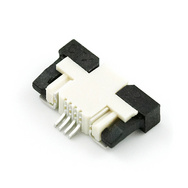To talk to the ISS, some local amateur radio enthusiasts hooked a phone line up to the PA, and this phone line went to Shane Lynd of Glendon, Queensland. Using his aerial, radio equipment and phone patch, we were able to talk with astronaut Timothy "T. J." Creamer while the ISS was within line-of-sight of Glendon, which was about six or seven minutes.
The link-up was arranged by Tony Hutchison of Kingston SE, South Australia, who coordinates ARISS (Amateur Radio on the International Space Station). ARISS lets crew members talk with family and schools, and provides backup comms with the station. There's a nice video about Tony's work here
http://www.youtube.com/watch?v=2KL8TGTUBTU
The students took turns to say their name, ask their question, and finish with "over". Here's the list of questions, plus my unreliable recollection of the answer T. J. gave [and some comments by me]:
- At what stage in your life did you decide you wanted to be an astronaut?
He said it wasn't a sudden choice, a lot of things he'd done beforehand prepared him for it and when he had the chance, he said yes. [His bio is here]
- Does living in a zero gravity environment cause long term health problems?
There are changes to bone density, to the muscles of the heart, and even to the structure of the eye.
- How far have astronauts ever been in space?
To the moon. Most people don't realise that only 12 people have been to the moon. Everything else has been done in low Earth orbit.
- Who was the youngest astronaut to go into space? How old was she or he?
T. J. didn't know the answer to this one, but he suggested that the student go to nasa.gov or Google for it.
- How do you exercise in space?
He said he uses a treadmill, with bungees that keep him in place so he doesn't float away.
- How did you get into space?
He said he was launched on a Soyuz rocket from Baikonur Khazakstan.
- What if there is a fire? Can you get rescued?
He said that the space station is designed so that in general, things can't catch fire. But if there was a fire, they'd cut the power and the fire would likely go out. They can also use fire extinguishers. If the fire was too serious, they could come home in the Soyuz capsule that is always docked to the station.
- What’s the most interesting thing about space?
He said floating around, and looking at the Earth.
- How do you drink in space because there is no gravity in space?
He told us about how they drink from fluid pouches.
- How do you control the space ship when it is floating in space?
He said that attitude control is done with gyrodynes [but I think he means control moment gyroscopes, as gyrodynes are a type of aircraft]. If the gyrodynes become saturated, small thruster rockets take over to correct the situation.
- Are there aliens in space?
He said he hadn't seen any, but he'd sure be glad to meet and talk with them.
- How do you sleep in the space station?
He said he zips himself into his sleeping bag, that has straps which stop him floating around. He said he sleeps very well.
- What is your favourite food you eat in the space station?
Fresh fruit. He said it was great when the Space Shuttle brought up some fresh fruit.
- What do you do on the space station to relax?
He mentioned that he likes to go into his bedroom and read or use the internet to research things. [He also likes running]
- What happens if you run out of air?
He said that this is managed pretty closely from the ground, so it's unlikely to happen.
- What happens to all the rubbish from the space station?
All the trash gets put into the Progress resupply vehicle, which is undocked and deorbited. The vehicle and the trash burns up in the Earth's atmosphere.
- How often do you have to do space walks to make repairs to the space station?
He said that they don't generally go outside to fix things. He said that he's done spacewalks, but he's not scheduled to do any spacewalks on this expedition.
- When you are in space are you ever nervous about anything?
He said that in general, he's not.
- When you swallow your food, does it feel funny in your stomach when in zero gravity?
[out of range]
In all, well over 200 people enjoyed the evening. A big thank you to T.J., Tony, Shane, the local amateur radio enthusiasts, and all the others who made this possible. It was certainly a night I'll never forget!










